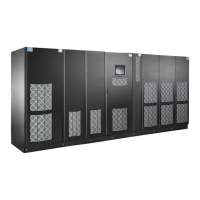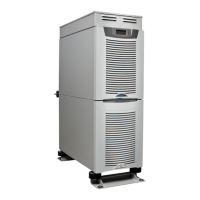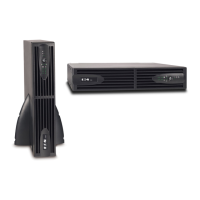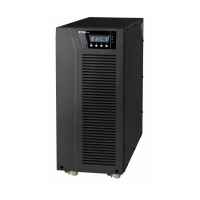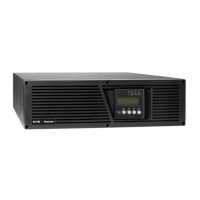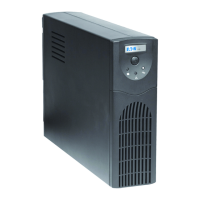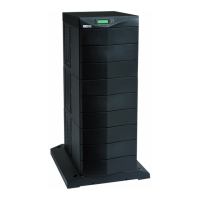Do you have a question about the Eaton Power Xpert 9395 and is the answer not in the manual?
Overview of the UPS's cost-effective and consistently reliable power protection standard features.
Information about optional accessories and features available for the UPS system.
Details on enhancing the UPS system with optional accessories for monitoring and communication.
Information on the required battery system for emergency backup power during power interruptions.
Guidance on how to use the manual for installing and operating the Power Xpert 9395 UPS.
Explanation of symbols used on the UPS and accessories to alert users to important information.
References to additional manuals and resources for further information on UPS components and systems.
Information on how to obtain assistance with UPS installation, operation, or information.
Information on how to view the UPS warranty details.
Crucial instructions for safe installation and maintenance of the UPS and batteries.
Guidance on creating a logical plan for installing the UPS system.
Ensuring the installation site meets environmental parameters for peak UPS efficiency.
Notes and guidelines for planning and performing UPS system power wiring installation.
Guidelines for connecting control wiring for UPS features and options.
Notes for planning and performing distributed bypass system power wiring.
Procedures for inspecting and safely unpacking the UPS cabinet.
Essential information and warnings before commencing UPS system installation.
Instructions for safely unloading UPS cabinets from pallets.
Procedure for installing UPS sections in a location with limited space.
Steps for electrically connecting the different sections of the UPS.
Instructions for installing a Field Installed UPM (FI-UPM).
Guidance for installing the customer-supplied battery system.
Instructions for installing a distributed bypass tie cabinet or distribution panel.
Procedures for installing external UPS and battery power wiring.
Description of the Eaton 9395 UPS system components and its function.
Explanation of how a single UPS operates independently to support an applied load.
Details on distributed bypass parallel operation for increased capacity and redundancy.
Identification and description of controls and indicators for monitoring UPS operation.
Description of the UPS control panel, including controls, indicators, and monitoring.
Guidance on using the color touchscreen control panel for UPS operation.
Operating instructions for a UPS system containing only one UPS.
Operating instructions for a UPS system containing multiple UPSs.
Information on the standard factory-installed X-Slot communication bays and compatible cards.
Details on Eaton's eNotify Service for proactive UPS monitoring and reporting.
Feature for connecting UPS to building alarms like smoke detectors or over-temperature alarms.
Description of the standard general purpose relay contact for UPS status indication.
Information on the optional RMP II for monitoring UPS operation remotely.
Description of the optional RIM II for indicating UPS status and alarm conditions.
Details on the optional SCM II for interfacing UPS system equipment with customer monitors.
Critical safety precautions for servicing and maintenance of UPS and batteries.
Guidelines for periodic inspection to ensure UPS operation and battery condition.
Information on proper disposal of used batteries and UPS equipment.
Information on available training for UPS system operation and corrective maintenance.
List of available Power Xpert 9395 UPS models with power ratings and frequencies.
Detailed specifications for the UPS input voltage, frequency, current, and surges.
Specifications for the UPS output capacity, voltage regulation, and transients.
Environmental specifications including operating temperature, altitude, and humidity.
| Frequency | 50/60 Hz |
|---|---|
| Topology | Double Conversion Online |
| Input Voltage | 380/400/415 VAC |
| Output Voltage | 380/400/415 VAC |
| Input Power Factor | 0.99 |
| Battery Type | Valve Regulated Lead Acid (VRLA) |
| Communication Interfaces | Ethernet |
| Operating Temperature | 0°C to 40°C |
| Relative Humidity | 0% to 95% (non-condensing) |
| Dimensions (W x D x H) | Varies by model |
| Weight | Varies by model |
